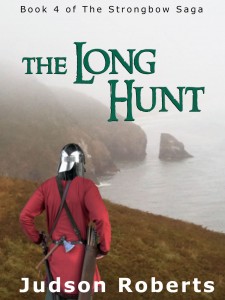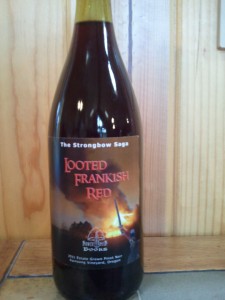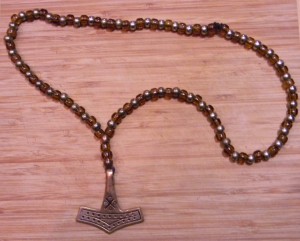
Before I get into the real news, a few quick housekeeping matters.
First, over the past few weeks I have been so immersed in pushing to get book 4 finalized and published that I have been unable to take the time to respond to posts from readers on this website. Sorry about that– I very much appreciate and enjoy hearing from readers, and like to respond promptly. But I’ve gone back now to catch up, and hopefully have answered everyone.
Second, the print edition of Dragons from the Sea has been lost, but now it’s found. A week or so ago I discovered, to my great dismay, that although the current Northman Books edition has been on sale since 2010, sometime earlier this year the book disappeared from Amazon’s search engines, so for all practical purposes it was invisible to prospective buyers, because searches for “strongbow saga” or even ones run using the book’s actual title would only show the old, out of print HarperCollins edition. The problem has now been corrected, but if anyone has been trying unsuccessfully to buy that book in a print copy, I apologize and hope you’ll try again.
And now…The Long Hunt, Book 4 of The Strongbow Saga, has finally been published. Here’s a link to its page in the Amazon-U.S. Kindle store:
The book actually went on sale there yesterday, but I discovered an error that had escaped repeated proofing readings—the final paragraph of the book in the Acknowledgements section, where I thank all of you for your support—had somehow gone missing. It has been corrected now, but if anyone discovered the book was on sale and bought a copy yesterday, be sure to update your book—Amazon will do it for free, and if you’ve allowed automatic updates on your Kindle account, they’ll hopefully do it automatically.
The e-book edition is also available as a Nook book from Barnes & Noble. This link leads to its page there.
An e-book edition will be available through Kobo, although for now we’re experiencing technical difficulties there. Kobo’s book uploading software will not accept the book’s file, and to date I’ve been unable to get their technical support to respond for my requests for assistance.
The e-book will not, in the foreseeable future, be available directly through Apple’s I-book store. I do not find Apple’s e-book division to be particularly author-friendly–among other things, they only allow e-books to be uploaded to their store from an Apple computer–so those who want to read the e-book edition of The Long Hunt on an Apple device will need to install the free Kindle app and get a Kindle edition of the book.
The print edition should be out sometime during the coming week. I had hoped to publish it simultaneously with the e-book editions, but upon reviewing an actual printed proof copy I discovered that when printed on paper, the maps in the book did not come out very clear, so they had to be reworked, delaying the final clearance for print publishing. Print is like that–it’s a little harder to work with, and changes take longer to correct.
A few words about the story: although The Strongbow Saga is called a series, technically that’s not really what it is. A true series is a group of books using the same characters, but each is a separate, stand-alone story, although they are related and each book usually carries the characters further along in time. The Strongbow Saga is actually just a single long story, which for practical purposes has had to be told over time in separately published installments. Book 4 is another installment; it is not a stand-alone story.
What that means is that you should not expect a tidy, satisfying wrap-up at the end of this book. The end of book four does set up the end of Halfdan’s quest—which will have become two quests by the end of this book—but everything will not be wrapped up and finished until book 5, which will end The Strongbow Saga’s story. I know this can be frustrating to readers—you do not want to have to wait to find out what happens next (I do promise you won’t have to wait five years this time). But that’s the way it is. My original editor at HarperCollins pointed out to me that in this aspect, The Strongbow Saga is not unlike The Lord of the Rings, which is a single story told across three books. Those three books were not all published at the same time, either–readers of LOTR who discovered it when it first came out also had to wait for the next installments. But you, as readers of the Saga while it is still in progress, actually have the opportunity to influence the story. I take to heart all of your comments I receive here on this website, and in emails from readers, and in reviews of the books (and my sincere thanks to all who have reviewed them—reader reviews are, more than anything else, what sell books in the world of publishing today).There are many elements in The Long Hunt that would not have been there but for suggestions, comments, and even criticisms by readers. I appreciate and value your input.
Although the over-arcing story of The Strongbow Saga carries across all five books, and only concludes in the last one, there are sub-arcs which involve aspects of Halfdan’s growth that do conclude in individual books. In Viking Warrior, he makes the difficult transition from being a slave to becoming a warrior, and his quest for vengeance is set in motion by Toke’s treacherous attack. The second plot arc, during which Halfdan progresses from being a neophyte warrior into an experienced, battle-tested, and even acclaimed one, takes place over the course of books two and three, Dragons from the Sea and The Road to Vengeance (which I originally wrote as a single book, but which HarperCollins, the series’ first publisher, split into two against my wishes). Also during this section of the story, Halfdan gains allies he needs to help him pursue Toke, and he finds his first experience with love. In book 4, The Long Hunt, Halfdan will progress from being an experienced, respected warrior into a leader, capable of commanding other warriors. In book 5, he will need to be able to do so.
Last, I would like to comment on the book’s pricing. The price for the print editions of my books is largely determined by the costs of production and distribution. The Long Hunt is a considerably longer book than any of the first three, and as such, it costs more to print. I have had to price it at $17.00 retail, because at that price, when the book is sold through expanded distribution channels (i.e., anywhere except by Amazon, which owns the printing company), by the time all of the costs kick in, I’ll make only about 50 cents per book sold. I cannot price the print version any lower.
The e-book editions, including the Kindle version, are priced at $7.99. That’s higher than the first three, but those were already old books when I republished them, so I felt a low price for them was appropriate. I do believe e-books should cost considerably less than their print versions–though some authors and most of the big publishers disagree–and I have discounted the e-book editions of The Long Hunt accordingly. But I did have to price this book, which required an enormous amount of work and some considerable costs to create, higher than the first three. I have to set the price high enough to make a living, or I can’t keep doing this. I hope readers will find the pleasure it brings them is well worth the cost.
And now, I am looking forward to a rest. For many months I have put too many aspects of my life, and too much work that needs to be done around my home and farm, on the back burner while I pushed to research, write, and publish this book by the end of this year, because too many have been waiting too long to read it. I felt I owed all of you that. But it’s time to catch up on the rest of my life, to enjoy the waning days of this year and look forward to the solstice, when the days will begin to grow longer and lighter again. Tonight, Jeanette and I are cooking ourselves a celebratory feast in honor of publication, and we’ll wash it down with…what else but:

May you all have a wonderful holiday season, and may the new year bring more joy than sorrow.
Judson Roberts















